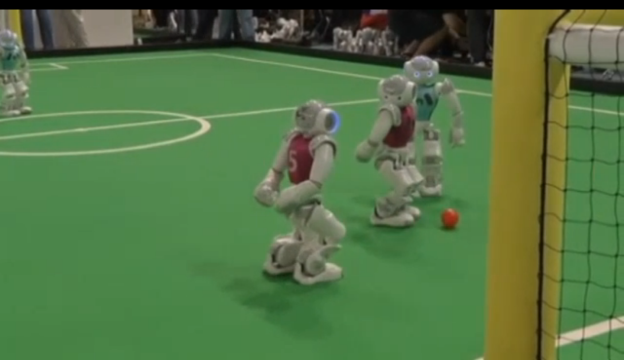
For whatever reason, soccer – football to the rest of the world – never really managed to take off in the United States, despite the sport’s dominance almost everywhere else across the globe and the continued success of the U.S. Women’s National Team. Clearly, something’s been preventing Americans from fully accepting the sport: Is it the low-scoring nature of the game? Perhaps the lack of full body contact makes it less exciting than American football? Maybe it’s the players themselves. If they’re a bit too dull for American audience, there’s a solution for that problem. Let’s make all the soccer players robots.
As ridiculous as that sounds, it’s not a theoretical scenario. Currently underway in Eindhoven in the Netherlands is RoboCup 2013, a five-day soccer tournament where each and every player is… well, not human. The tournament is the creation of the RoboCup Soccer League, which has one simple, if somewhat ambitious, aim: To create a robot soccer team that not only looks human, but can beat the human World Cup winners in a soccer match by the year 2050.
This isn’t necessarily the work of some soccer-obsessed cyborg super villain either. Organizers say that the true intent of the tournament is to try and encourage public interest in the field of robotics, with a particular focus on low-cost robotic technologies. “With these soccer games, we’re trying to develop new technology,” Robin Soetens, a crew member of the Eindhoven Technical University team told the Guardian. “And this new technology can be applied in many other fields of robotics.”
The development of new robo technology means that there’s more to the tournament than simply making something that knows how to dribble a ball. There’s also a desire to create robots that can help humans play soccer, as well. As the official site for the tournament explains, “robots which can propel, communicate with each other and with humans and react to their constantly changing environment can be applied in the society in many different ways.”
To this end, the “RoboCup Rescue” and “RoboCup@Home” challenges exist, tasking inventors to create robots that can assist in case of disaster. The nature of disaster is left somewhat nebulous, but is defined only as something that “humans can’t handle it on their own or when it is too dangerous for humans to help,” or help in environments such as rest homes or hospitals.
One thing is for sure: If a sporting contest created with the, ahem, goal of athletic robots that could beat humans at their own game doesn’t help soccer become popular in the U.S., then maybe it’ll never happen.


